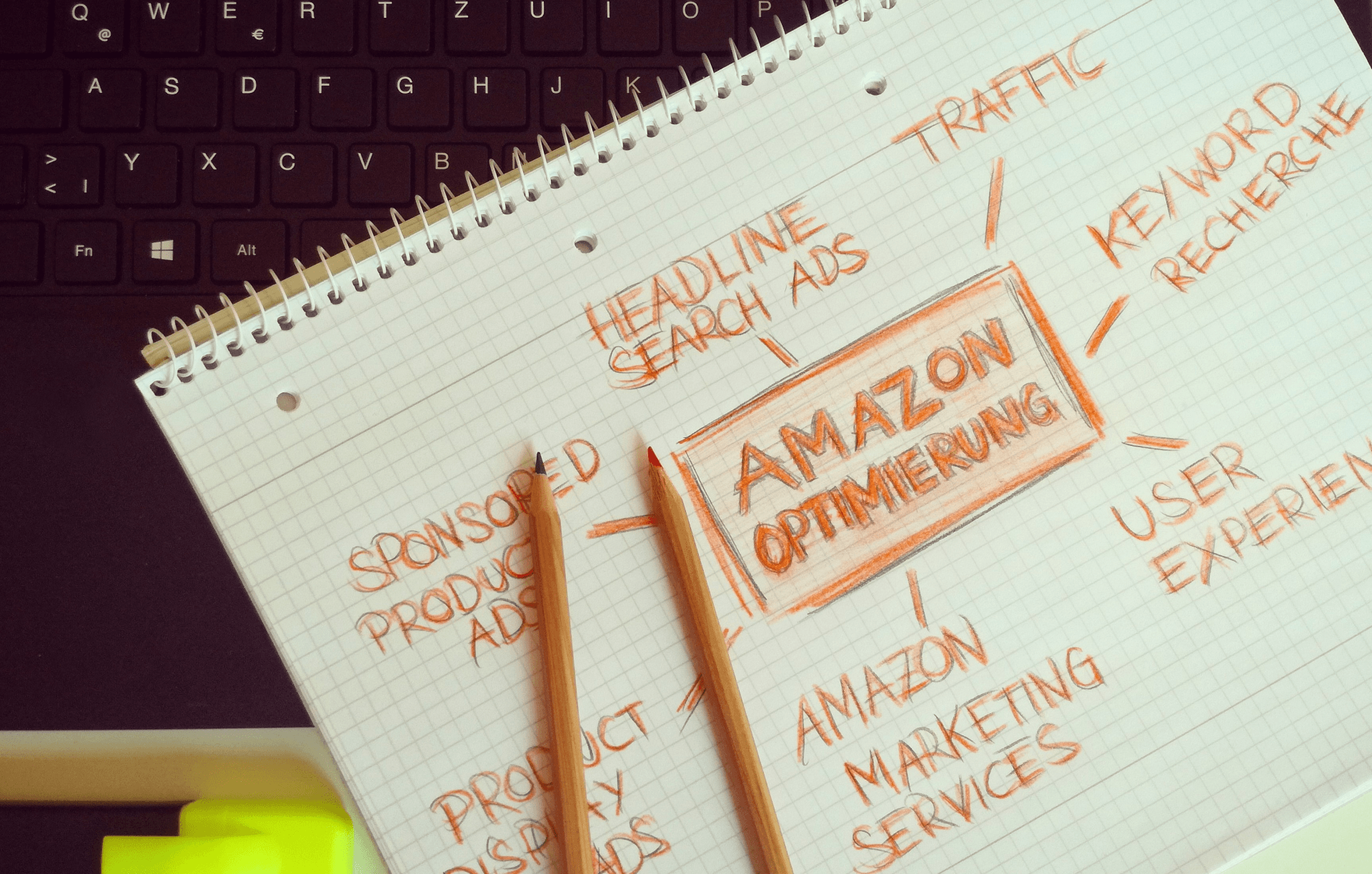
Welcome to Selling on Amazon
It’s no secret: At Amazon, we obsess over customers. And our customers want a trusted destination where they can purchase a wide variety of goods which is what makes sellers like you so important. We’re always looking for ways to add value for our customers and be Earth’s most customer centric company. As an Amazon seller, you take part in offering those customers better selection,
better prices, and a topnotch customer experience.
This eBook Contains High level information that will help you start your journey selling on Amazon. If you want to dive in deeper on any subject, visit sell.amazon.com for more information about all the topics covered here.
The Amazon Edge
When you start selling on Amazon, you become part of a retail destination that’s home to sellers of all kinds, from Fortune 500 organizations to artisan vendors who make handcrafted goods. They all sell here for a reason: to reach the hundreds of millions of customers who visit Amazon to shop.
- Since third party sellers joined Amazon in 1999, they’ve grown to account for 58% of Amazon sales.
- Third party sales on Amazon are growing at 52% a year (compared to 25% for first party sales by Amazon)
Is Amazon Right for Your Business
The short answer is: YES! The largest household brands sell on Amazon. So do emerging brands that will pop on your radar soon. Small and medium sized businesses thrive here, and they account for more than half the units sold in our stores worldwide. Whatever your business is and whatever size it is we’re excited for you to grow with us. Find your fit and start selling today.
Before you Start Selling

How to Register on Amazon
- With two selling plans (they’re called Individual and Professional, but you can think of them as standard and premium), Amazon offers you the flexibility to sell one item or sell thousands. Before you begin registration, decide which plan is a better fit for your business.
- The Individual plan costs $0.99 per sale, while sellers using the
Professional plan pay $39.99 per month, no matter how many items they sell. If you sell more than 40 items a month, the Professional option makes a lot of sense. Whichever plan you select, don’t worry about making the wrong choice you can change plans at any time.
Individual Plan
- You plan to sell fewer than 40 items a month.
- You want to keep up front costs low.
- You don’t need advanced selling tools or add on programs.
- You’re still deciding what to sell.
Professional Plan
- You plan to sell more than 40 items a month.
- You want access to advanced selling tools.
- You’d like to apply for add on programs like (Amazon Business, Launchpad, or Handmade)
- You’re an established ecommerce seller.
Tools for Brand Owners
If you own a brand, Amazon offers tools to help you build, grow, and protect it. Enrolling in Brand Registry can help you personalize your brand and product pages, protect your trademarks and intellectual property, and improve the brand experience for customers along with additional advertising options and recommendations on improving traffic and conversion.
What you’ll Need to Get Started
- In order to complete your registration, make sure you have,
- Access to your bank account number and bank routing.
- Number, a chargeable credit card, government issued national.
- ID, tax information, and phone number.
How Much does it Cost to Sell on Amazon?
There are a few different types of selling fees you might pay, depending on
your selling plan and the types of products you sell.
Subscription Fee: These are the fees you pay for yShipour selling plan, and they vary depending on which plan you select.
- On the Professional selling plan there’s a flat fee of $39.99 per month and no
per item feel.
- On the Individual selling plan there’s a $0.99 fee for each item sold.
Selling Fee: These fees are charged per item sold, and they include referral fees (which are a percentage of the selling price and vary depending on the product’s category), and variable closing fees (which apply only to media categories).
Shipping Fee: When you fulfill orders yourself, Amazon shipping rates apply. We charge these shipping rates based on the product category and shipping service selected by the buyer.
FBA Fee: For products that Amazon fulfills for you (known as Fulfillment by Amazon, or FBA), there are fees for order fulfillment, storage, and optional services. (More information about FBA can be found on page 6.) To review the fees that may be associated with your account, visit the Selling on Amazon Fee Schedule.

What is Seller Central Amazon Account
Once you register as an Amazon seller, you’ll have access to your Seller Central account. Think of Seller Central as your go to resource for selling on Amazon. It’s a portal to your Amazon business and a one stop shop for managing your selling account, adding product information, making inventory updates, managing payments, and finding helpful content to help you navigate your Amazon business. It’s also where you list all your products.
Amazon Seller App
Did you know you can keep track of your Amazon business even while you’re on the go? The Amazon Seller app lets you analyze your sales, fulfill orders, find products to sell, manage offers and inventory, respond to customer questions, capture and edit professional quality product photos, and create listings right from your mobile device. Never be more than a swipe away from your Amazon business. Download it for iPhone or Android to get started.
- Keep track of your inventory and update your listings from the Inventory tab.
- Download custom business reports and bookmark templates you use often.
- Use customer metrics tools to monitor your seller performance.
- Contact Selling Partner Support and open help tickets using the Case Log.
- Keep track of your daily sales for all the products you sell on Amazon.
How to List Products
Listing your First Product: To sell a product on Amazon, you must first create a product listing. Either match an existing listing (if somebody else is already selling the same product on Amazon), or create a new listing (if you are the first or only seller).
The specific way sellers upload and list their products varies depending on their selling plan.
To put it simply: Sellers using a Professional seller account have the option of listing their products in large batches using bulk uploading or inventor management with third party systems, while Individual sellers list products one at a time.
What You will Need to List First Product
In most cases, products must have a Global Trade Item Number (GTIN), such as a UPC, an ISBN, or an EAN. Amazon uses these product IDs to identify the exact item you’re selling.
If you match a listing, you won’t need to provide a product ID since it already exists. If you’re adding a product that’s new to Amazon, you may need to purchase a UPC code or request an exemption.
In addition to a product ID, here’s some of the important information that goes into each product listing:
- SKU
- Product title
- Product description and bullet points
- Product images
- Search terms and relevant keywords
Restricted Product Categories
It’s important that customers are able to shop with confidence on Amazon, which is why some product categories (like certain grocery or automotive products) are known as “restricted product categories.”
Amazon might require performance checks, additional fees, and other qualifications in order for you to sell certain brands or list items within restricted categories. You’ll be able to request approval from
within Seller Central.
Successful Listing = Successful Launch
Following best practices for adding listings can have a big impact on their success. Make it easy for shoppers to find your offers by adding descriptive titles, clear images, and concise feature bullets to your items.
Avoid These Things that Could Impact Your Launch
- Variation issues: Products that vary only by color, scent, or size might be a good candidate for listing as variations. Ask yourself if the customer would expect to find the products together on the same page. If not, list them separately.
- Image compliance: Your images must be at least 500 x 500 pixels (increase the size to 1,000 x 1,000 for high quality listings) and set against a plain white background. The product should fill at least 80% of the image area.
- Product IDs: Make sure you’re meeting the requirements for product UPCs and GTINs (Global Trade Item Number). Consistency in these codes helps promote confidence in the range of products shown in the Amazon catalog.
The Product Detail Page
highlighting the products key features and differentiating characteristics

Amazon Brand Registry
If you sell your products under a registered trademark, you may be eligible to enroll in Amazon Brand Registry at no extra charge. Brand Registry gives you control over product detail pages that use your brand name, and lets you add more rich media (like videos and enhanced text information) to your detail pages.
The Product Detail Page; What’s What?
A product detail page is where customers view a product sold on Amazon. If you’ve shopped on Amazon, you’ll probably recognize the product detail page. It’s where customers can find all the relevant information about a particular item.
When multiple sellers offer the same product, Amazon combines data from all the offers into one product detail page (so we can present customers with the best experience). You can propose product information on a product detail page, along with other sellers and manufacturers, and request detail page reviews if you think the information is not correct.
As you’re building your product detail pages, try to think about what will best help customers find your products, discover answers to their questions, and make a purchasing decision. Aim for the ultimate customer experience by making your listings concise, accurate, and easy to understand.
- Images of the product (make sure they’re at least 500 x 500 and boost that size to 1,000 x 1,000 to increase the quality of your listings).
- The title of the product (use 50 characters, maximum, and capitalize the first letter of every word).
- Any variations of your product you have available, which may include things like different colors, scents, or sizes.
- The description, which can be optimized for search engines using keywords to improve the reach of your product listings.
- The Featured Offer, which is the section of the product page where customers can add items to their card or “Buy Now.” If you’re one of multiple sellers advertising the same product, research strategies for “winning” the Featured Offer to improve your overall sales.
- The bullet point information, which should be short, descriptive sentences highlighting the products key features and differentiating characteristics.
How to Deliver Products

Selecting the Right Fulfillment Option
Amazon sellers have two options for getting shoppers their stuff: You can do it yourself, maintaining your own inventory and shipping products to customers (merchant fulfillment), or have Amazon take responsibility for packaging, labeling, and shipping products through Fulfillment by Amazon (FBA). Each method has its own set of benefits you just have to decide which one is right for your business.
If You’re Fulfilling Your Own Orders
Merchant fulfilled just means you store and ship products directly to customers yourself. Amazon charges shipping rates based on the product category and shipping service selected by the customer, then passes the amount on to you in the form of a shipping credit.
Set shipping rates apply to all products sold with an individual plan, so it’s important to determine if you can still price items profitably. Amazon’s Buy Shipping tool can help you get a great deal on shipping labels with Amazon’s trusted network of shipping partners, ship and confirm your orders, and track your shipments.
The Benefits of Fulfillment by Amazon
Around the world, Amazon has more than 175 fulfillment centers which contain more than 150 million square feet of storage space. With FBA, you get to store your stuff on those shelves. You also get Amazon’s world class customer service and returns, along with other advantages (like automatic Prime eligibility and Free Super Saver Shipping) that help you scale your business–fast)
How Fulfillment by Amazon Works
- Ship your inventory to Amazon. It will be scanned and made available for sale.
- With each order, Amazon packages and ships the product directly to the customer.
- Amazon collects payment from the customer and pays you available funds every two weeks.
- Amazon’s customer service team handles questions, returns, and refunds.
Fees for Using Fulfillment by Amazon (FBA)
There are two types of FBA fees: fulfillment fees (which are charged per unit sold and include picking and packing your orders, shipping & handling, customer service, and product returns), and inventory storage fees (which are charged monthly, and are based on the volume of inventory being held in an Amazon fulfillment center)
You’ve Made your First Sale: What’s Next

Managing your Amazon Business
Your first sale is a big milestone but it’s just the beginning of your growth opportunities selling on Amazon. Once your store is up and
running, there are a few important things to keep in mind.
Performance Metrics (and why they matter)
Amazon sellers operate at a high standard so we can provide a seamless, delightful shopping experience. We call it being customer obsessed, and as an Amazon seller it means keeping an eye on these key metrics:
- Order defect rate (a measure of a seller’s customer service standards): < 1%
- Pre-fulfillment cancel rate (initiated by the seller before shipment): < 2.5%
- Late shipment rate (orders that ship after the expected date): < 4%
- You can keep tabs on your performance and make sure you’re meeting your targets in Seller Central.
Customer Reviews
Customer product reviews are an integral part of the shopping experience on Amazon, and they benefit both customers and sellers. Make sure you’re familiar with the right way and wrong way to get more product reviews and avoid policy violations.
Opportunities for Business Growth

This is Only the Beginning
The moment you’re selling on Amazon is the moment you can start growing your Amazon business. Once you’ve launched your business, Amazon has tools in place to help you take your business to the next level (or the next couple of levels).
Advertising
- Amazon’s advertising solutions create new ways for you to reach and engage shoppers, regardless of whether they’re just starting to compare products, or ready to make a purchase.
- Ads show up right where customers will see them (like the first page of search results or product detail pages).
- Amazon offers three advertising solutions, and all of them are accessible through Seller Central.
Sponsored Products
Sponsored Products are ads for individual product listings on Amazon, so they help drive product visibility (and product sales). They appear on search results pages and product detail pages.
Sponsored Brands
Sponsored Brands showcase your brand and product portfolio. They’re search result ads that feature your brand logo, a custom headline, and up to three of your products.
Amazon Stores
Stores are custom multipage shopping destinations for individual brands that let you share your brand story and product offerings. (And you don’t need any website experience to use them.)
Promotions and Coupons
Customers want to save, and promotions are an incentive to make a purchase now. There are three types of promotions: money off, free
shipping, and buy one get one free. You can also offer percentage or money off discounts with digital coupons.
Global Expansion
- Selling globally is a huge milestone for any business. It means hundreds of millions of new customers and the potential for a big boost in sales. Global expansion has a lot of moving parts, but with Amazon Global Selling, you get to use Amazon’s global infrastructure to get your products in front of a worldwide audience.
- When it’s time to take your business to the next level, use Amazon Global Selling to list and sell your products on any of our online stores in North America, Europe, and Asia
FBA Export
At no extra charge, expand your FBA business to more than 100 countries – minus the complexities of international selling, FBA Export allows international customers to purchase export-eligible ASINs from your selling marketplace.
What Makes a Great Seller?

A Checklist for Growth
Opportunities for growth are all around you but here are a few things to try in your first 90 days as an Amazon seller.
- Keep an eye on your account health in Seller Central
- Use Fulfillment by Amazon or Seller Fulfilled Prime
- Advertise your listings or offer deals and coupons.
- Enroll in Brand Registry and create enhanced brand content.
- Expand your selection by listing more products.
- Use the Automate Pricing Tool in Seller Central
Your First 90 Days
The first three months after you launch your Amazon business are an important time for establishing practices that will boost your performance from there on out.
Author and Creator: Dean Masalta
You don’t have to do it alone. We have a full-service Amazon growth team that can help you take advantage
of everything the retail giant offers its sellers.
